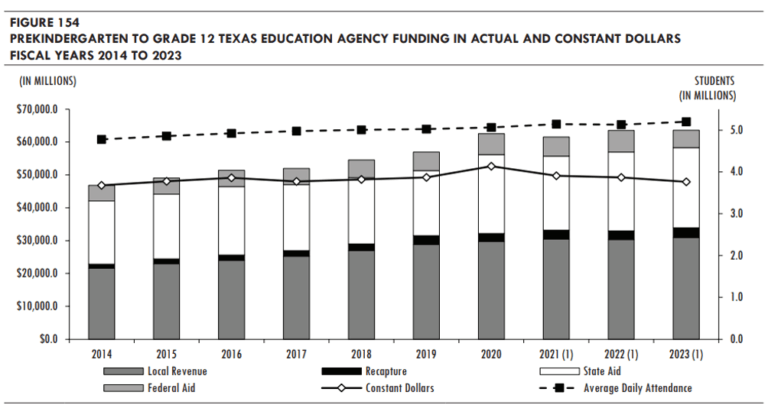Governor Greg Abbott recently claimed that per-student funding for schools is “now at an all-time high.” This claim, however, lacks critical context and fails to reflect the fiscal challenges that public school districts face. As we expect to hear this claim repeated in the 2023 legislative session, it is important to keep these points in mind and to share them with elected officials and other leaders in your communities:
- Double-digit inflation has driven up school districts’ costs while funding has been stagnant. Schools have seen sharp increases in costs for fuel and utilities, while their employees are paying more at home for food and other necessities.
- When adjusted for inflation, per-student funding has declined in Texas over the past 8 years.
- At current levels, schools across Texas are struggling to recruit and retain the workforce they need — from qualified classroom teachers to bus drivers and cafeteria workers. Additional investments in public education would help school districts build the workforce required to serve their students.
- The 2019 state investment in public education, while helpful, has turned out to be billions of dollars less than advertised. As property values have risen and school districts have collected more in local taxes, legislators have reduced state funding for public education.
- The preponderance of additional spending on education is coming from local revenue raised through property taxes, as well as additional state spending to pay for property-tax reduction. It is important to remember that state spending on property-tax reduction does not provide a net increase for schools and therefore does not impact students, even though it is calculated as part of spending per student.

